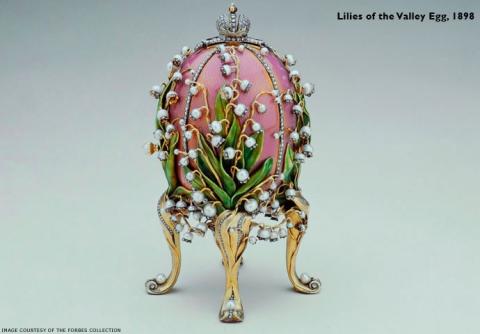Continuing with the tradition started by his father Alexander III, Nicholas II ordered this Easter egg as a gift for his wife, Alexandra, during 1898.
Created under the supervising eyes of Peter Carl Faberge, the House of Faberge made this imperial Easter egg in Art-Nouveau style. Michael Perchin was the supervising goldsmith.
The finished work was presented to Nicholas II on the 5th of April, 1898. He then gave it to his wife, Empress Alexandra Fyodorovna. In this image, we see the egg in its closed position.
Today this object is owned by Viktor Vekselberg, a Russian industrialist, who is seeking to purchase as many of the surviving 43 eggs as possible. His objective is to reassemble these imperial objects of art so they are once-again part of a single collection.
Click on the image for a better view.
Media Credits
Image of the 1898 Fabergé Easter egg—called "Lilies of the Valley"—which Tsar Nicholas II gave to his wife, Empress Alexandra, on or about the 5th of April, 1898. Image, courtesy Forbes Collection; online via the Fabergé website.


